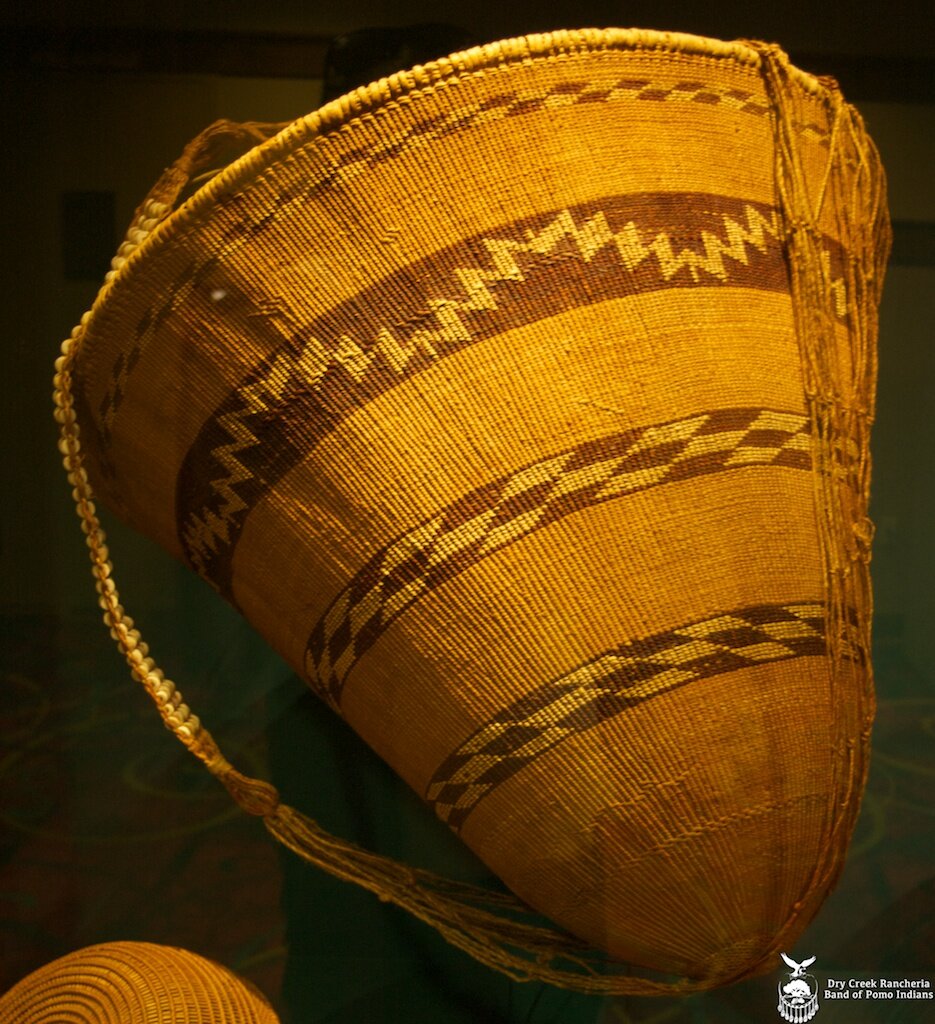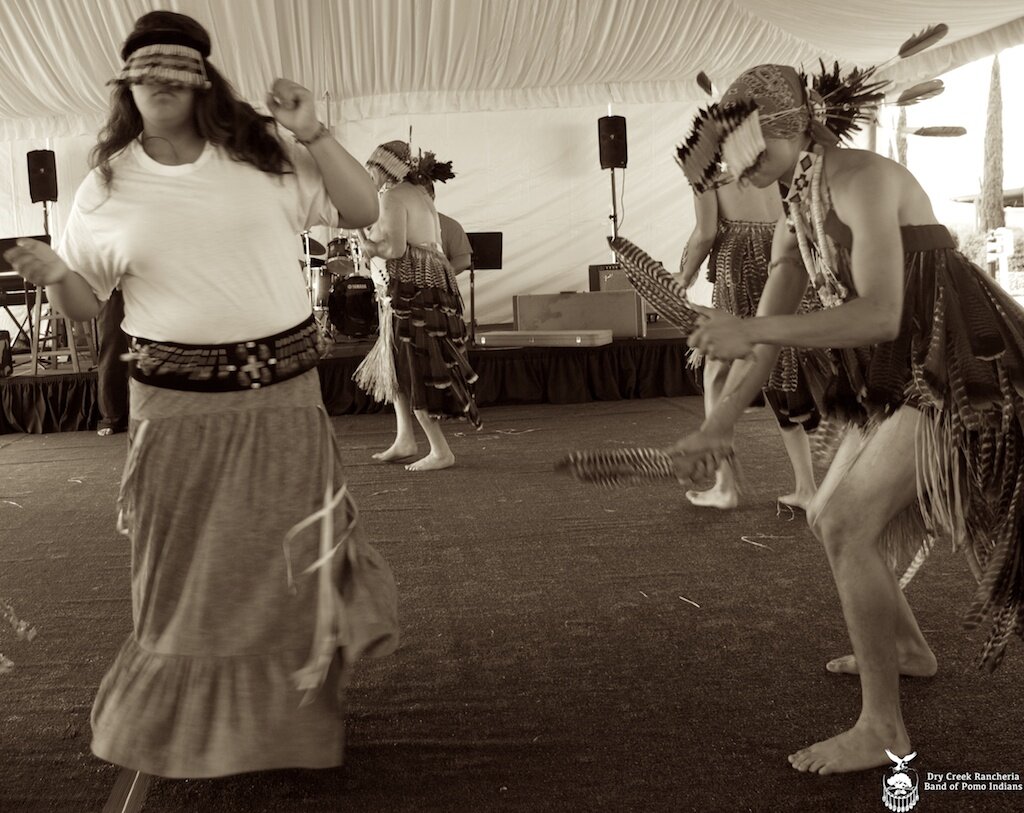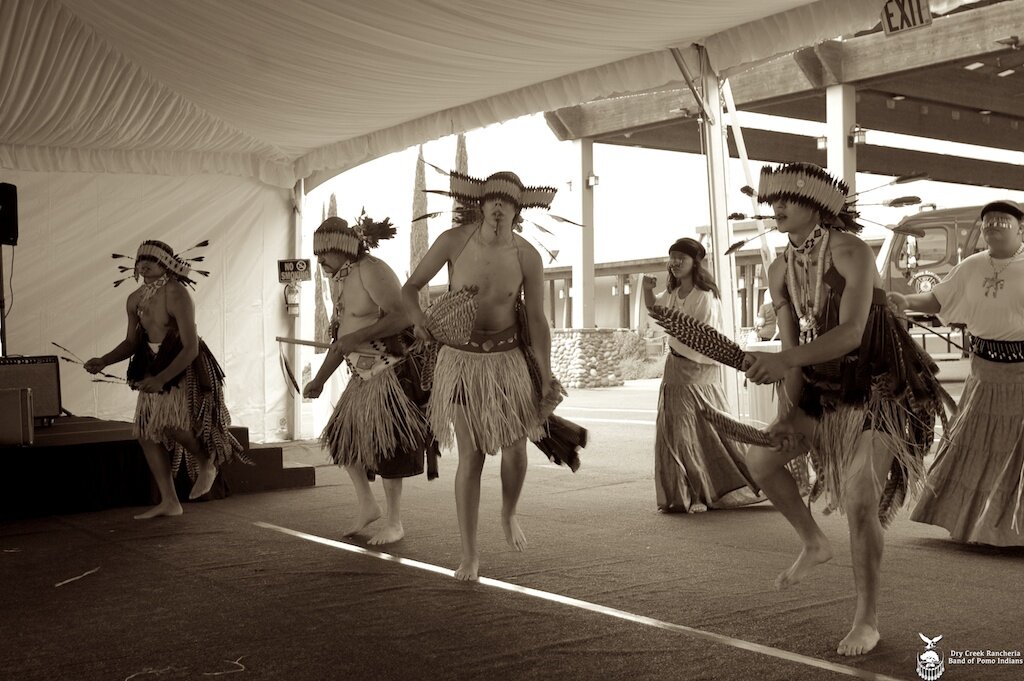Culture
Dry Creek Rancheria Band of Pomo Indians

Our Culture
The vibrant Pomo culture is based on harmony between nature and humans, and continuity between the past and the present. Sacred rituals, skilled artistry, and life cycle celebrations are handed down from one generation to the next.
Natural resources play a central role in Tribal arts. The Pomo Indians are widely recognized for their stunning basket weaving from indigenous materials. For centuries, Pomo weavers gathered sedge grasses, willow roots, and bulrushes from local coasts and wetlands. These became the foundation for intricate coiled baskets, woven with a variety of complex techniques. Ornate baskets, given as gifts to loved ones and revered elders, were often adorned with black and white “Spanish seeds,” and elegant feathers from mallards, woodpeckers, orioles and blue jays. Although women were the designated weavers in most Tribes, Pomo men traditionally made baskets for fish traps and cradles.
Pomo Baskets
Pomo baskets are displayed in many museums around the world, and represent an enduring art that is still preserved by the Tribe. To the current day, baskets are used for cooking, food gathering, rituals, gifts, family memorials and healing. Jewelry making is another living tradition among the Pomo people. Early artists created elaborate necklaces, made from abalone shells and clamshells that were collected from local coastal waters in the summer months. Men and women wore these treasured necklaces during dance celebrations and ritual ceremonies.

Tribal Celebrations
Many Tribal celebrations feature acorns, which were a primary source of sustenance to the Pomo people. Acorn soups, cakes and breads were typical traditional dishes. Acorn bread was made of dry acorn flour, and then wrapped in wet leaves and baked overnight on hot coals. The acorn bread lasted for months, making it an ideal food source for this hunting/gathering Tribe.

Tribal Celebrations
Many Tribal celebrations feature acorns, which were a primary source of sustenance to the Pomo people. Acorn soups, cakes and breads were typical traditional dishes. Acorn bread was made of dry acorn flour, and then wrapped in wet leaves and baked overnight on hot coals. The acorn bread lasted for months, making it an ideal food source for this hunting/gathering Tribe.
History & Cultural Identity
The Dry Creek Rancheria Band of Pomo Indians is known for its enduring commitment to preserving the Tribe’s history and cultural identity. As part of this commitment the Tribe plans to build a Cultural Center on Acorn Road. The Cultural Center will provide a welcomed gathering place for all generations to celebrate ancient traditions and keep treasured Tribal arts alive.

